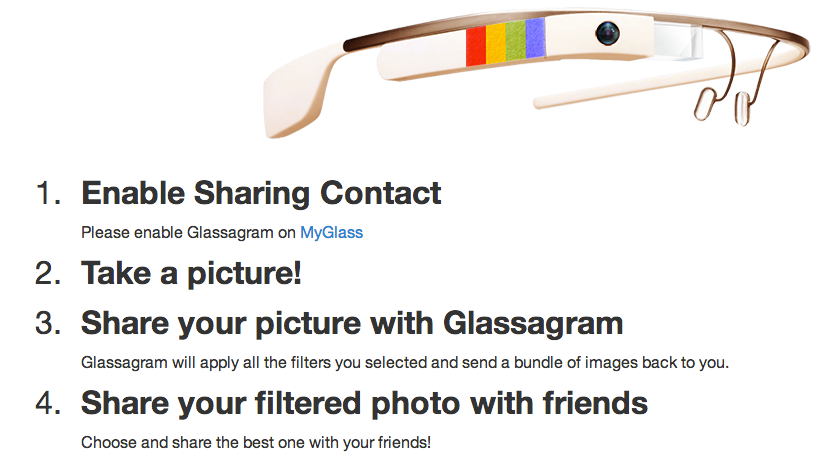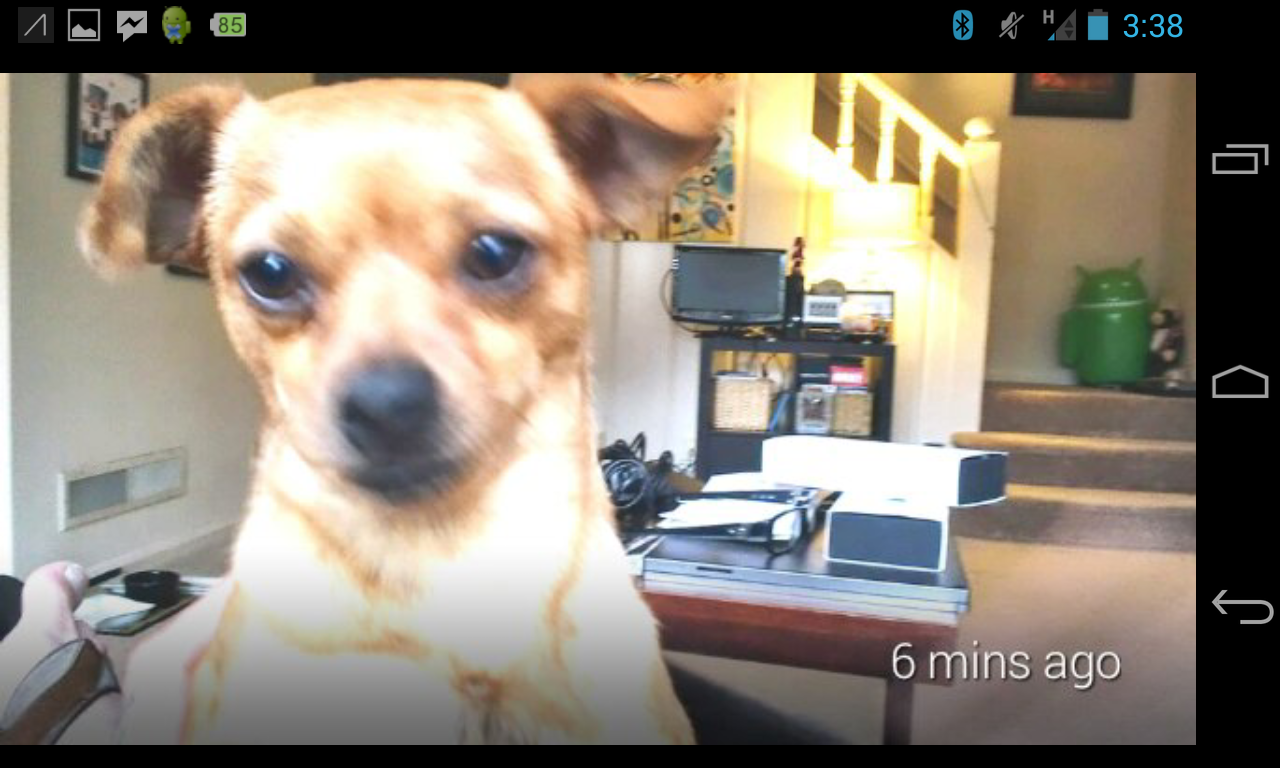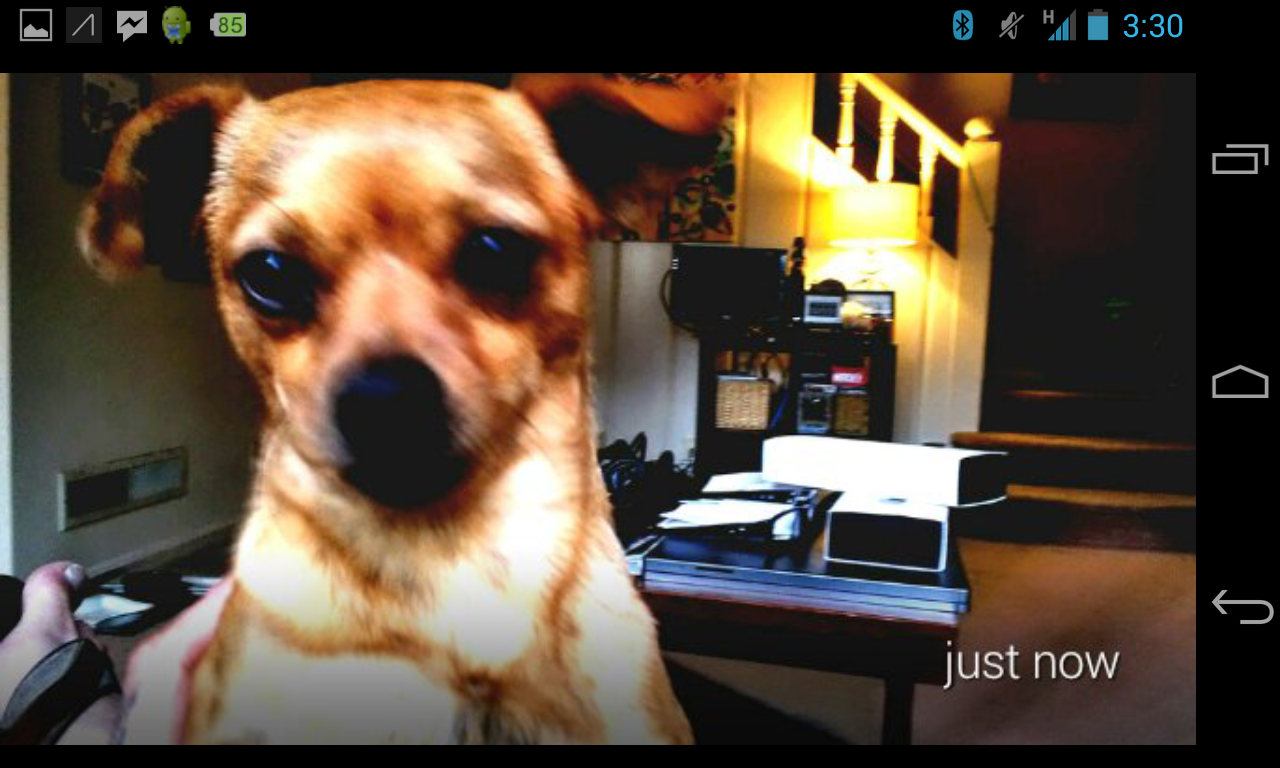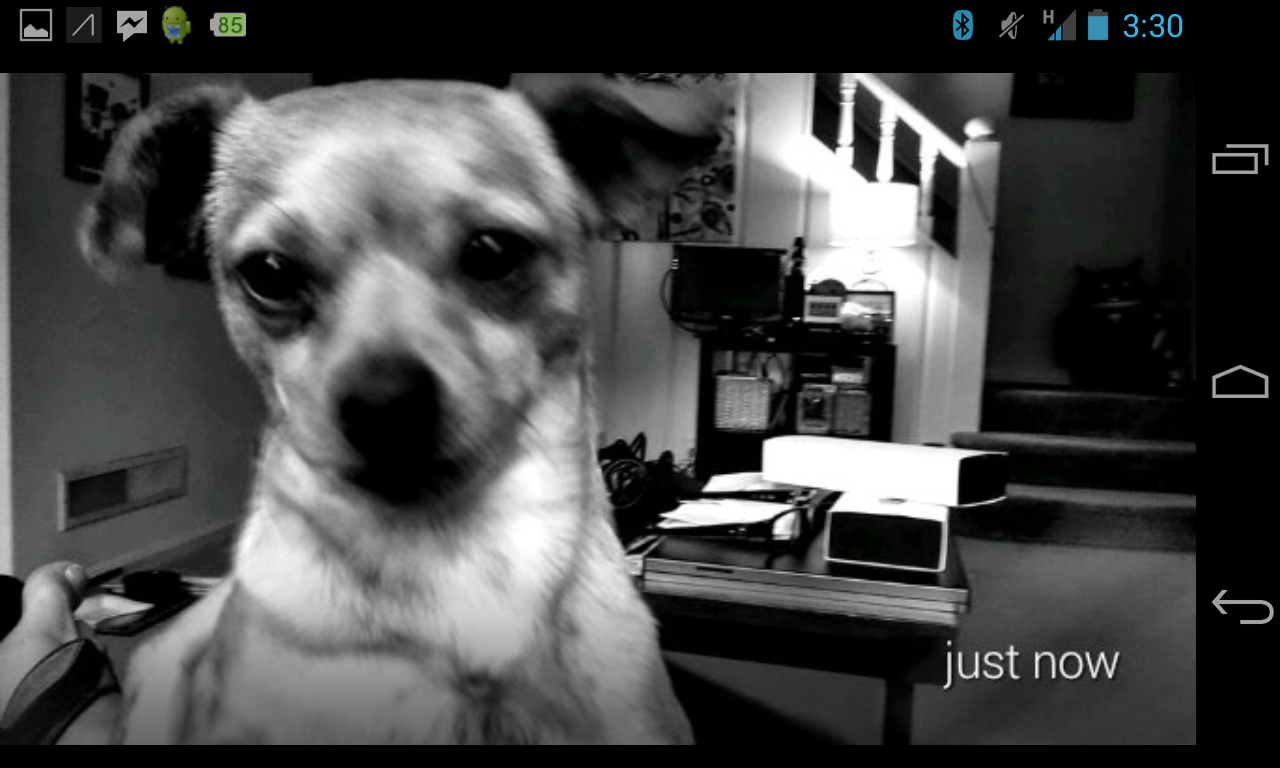Thanks to Instagram, we rarely see photos taken from camera phones without some type of filter on it. Even Twitter’s photo service uses Aviary to drop an earthy overlay or black-and-white treatment onto your digital masterpiece. Google Glass users aren’t going to be left out of this craze thanks to an app aptly named Glassagram.
Again, this is the type of app that we’re seeing early on, consisting of the very basics that consumers will look for when thinking about whether Glass is a device for them, once they become available to the general public.
Adding filters to photos is pretty consumery.
Once you sign up for Glassagram, you simply share a photo with the service, then a card is sent back to your Glass timeline with all of your filtered options:
The timeline card is going to be a main component in every Glass app that we see, as it will be the primary way for users to interact with what they’re seeing. For now, options like “share” are all we have, but I could see a day where more advanced controls like editing could be available. Something like Glassagram would be a perfect case for this.
Once you get your options, simply scroll your way through them and reshare the one that tickles your fancy. It looks like you’ll get five different filtered options for your photo. The nice part about this is that it’s all done through the Glass UI, so you don’t need your phone or the web to do anything:
Technological marvel? No. Handy app and an example of what’s to come from Glass developers? Yes.
As I’ve been speaking with members of the Glass community, I’ve learned that quite a few companies are starting to look at the device to develop their own official apps, like Twitter. There seems to be interest in the developers who are getting a head start in the Explorer program from the companies, as well. This means that those poking around the Mirror API to figure out everything they can do might be able to land themselves a sweet job focusing on the device specifically.
Will a company like Facebook dedicate a small team to figuring out the right experience for its users on Glass? It’s a safe bet that they will. Until then, we get to enjoy these small, but evolutionary, apps coming from Glass explorers. It feels like the early days of another platform.





